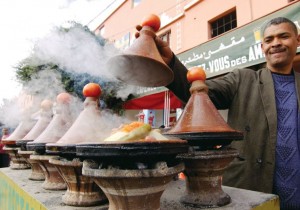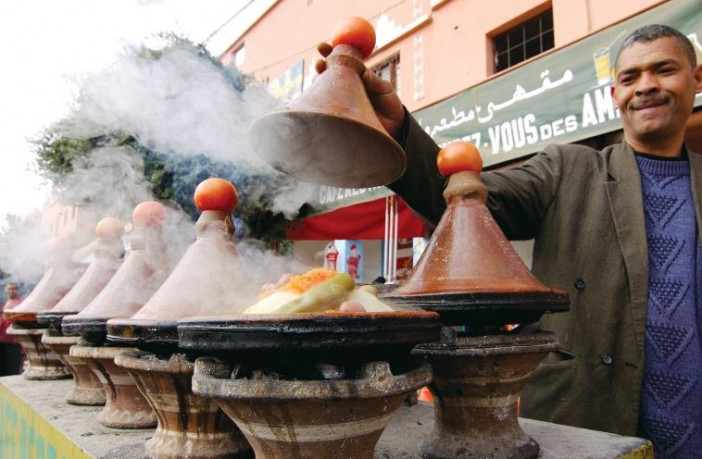Jerusalem Post
by Mohamed Chtatou
Photo by: Wikimedia Commons

There is no doubt that Morocco occupies a strategic position in its region. As a matter of fact, it sits on the crossroads of many cultures, religions and civilizations, and has through the centuries become a true melting pot of so many ways of life and human beliefs, not to mention, obviously, races and ethnic groups.
Because of this highly interesting brassage de cultures (mixing of cultures), Moroccans have masterfully acquired the ability and predisposition to accept the other, no matter how complex his difference might be and how alien his “otherness.”
Moroccans by nature are accommodating, open, friendly, available and very tolerant. However, their most important quality, by far, is their innate ability to welcome in other life experiences and cultural currents that obviously are not in contradiction with their entrenched beliefs, digest them and adapt them to their lives. As a result, Morocco is and has always been also an open forum for dialogue and exchanges between the peoples of the Mediterranean and the sub-Saharan region.
A material proof of this is that its languages and cultures are full of loan words, tales, beliefs, stories, myths and traditions that originated in the other religions of the book. The Finnish anthropologist and ethnographer Edward Westermarck masterfully documented this in his opus entitled Ritual and Belief in Morocco (two volumes) that was published in the first half of the twentieth century.
Indeed, they have interacted positively with the Phoenicians, the Romans and many other races and have made beneficial exchanges with them, and today one can still witness vestiges of these human interactions in the local idioms, customs and the beliefs, not to mention the remains of entire cities such as Volublis, Lixus and others.
As early as the 8th century, horsemen coming from Arabia brought with them a new monotheistic religion, Islam, and gradually converted Christian and polytheist Amazigh people, with the exception of the Jewish inhabitants, who kept their monotheist belief.
In turn, the newly converted Amazigh, under the leadership of their able general Tarik Bnou Ziyad, crossed the strait in 711 that, since, was called after him: Gibraltar Jabal Tarik (the Mount of Tarik), and spread Islam in the Iberian Peninsula, that remained under Islamic rule until the advent of the Reconquista. After the fall of Grenada to the Catholics in 1492, both Muslims and Jews were kicked out of Spain and headed to Morocco where they found refuge. They were welcomed in by the locals and managed to prosper and occupy important posts in the government besides thriving in trade and finance.
Moroccan dynasties such as the Almoravids (1040- 1147) and the Almohads (1121-1269), after the long and painful Islamization of the country, grew in power and moved southward, spreading this new religion in sub-Saharan Africa by persuasion and, at times, by subjugation of the African people. Subsequent Berber and Arab dynasties of Morocco engaged in the unfair trade of exchange of salt against gold, enrolled the locals in their armies and brought home many others as slaves, known as the Gnawa. The African slaves, to keep their culture alive, played in secret their music and practiced rituals of exorcism known as lila. Centuries later, when they were freed, the Gnawa formed religious brotherhoods and traveled all over the country playing their music for subsistence. Today, their music and culture has gone global, thanks to the yearly festival organized in Essaouira around May or June and attended by thousands of people in search of Sufi exhilaration.
Judaism and Jews are as old as the country itself.
Indeed, their first influx dates back to 70 AD, and Jews lived continuously in Morocco until their massive migration to Israel, in the aftermath of the creation of that state in 1948. They dwelled all over the country in villages, towns and cities and lived on commerce, trade and finance. Because of their wide experience in international trade, Moroccan sultans appointed them as their financial and commercial agents: tujjar as-sultan. During the Second World War when Nazi-occupied France wanted to prosecute them, the late king Mohammed V resisted the order and called for the prosecution of all Moroccans, if this were to happen, on the ground that they are no different from his other subjects, for whose safety he was responsible.
A good example of interfaith dialogue in Morocco can be witnessed in the city of Sefrou situated 30 km. south of the spiritual capital of the country, Fes.
In Sefrou Muslims and Jews lived in good harmony, door by door, and practiced their religious rituals in unison to the extent that it was difficult to tell what was Islamic and what was Jewish. What is more, they venerated the same saint buried in a grotto in a neighboring mountain. The site was tactfully called “Kaf al-moumen” ( the grotto of the faithful) because it was a religious sanctuary for both Muslims and Jews and times of worship in this area were equally divided.
The example of Sefrou is not unique in Morocco; such examples are to be found in other places, such as Debdou, Azrou, Fes, Rabat, Meknes, Marrakesh, etc. In all these places lived large communities of Jews who practiced their faith and trades in complete peace and harmony. They were full Moroccans and as such enjoyed the full rights and obligations of their Muslim brethren.
At the turn of the 20th century, Morocco was subjected to European colonialism and the country was divided up between the French and the Spaniards who, over 50 years of protectorate regime, left a lasting imprint on the language, culture and way of life of Moroccans, still vivid nowadays.
Summarizing the different external influences on Morocco, the late king Hassan II eloquently stated that his country was a tree that has its roots in Africa, its trunk in the Arab-Muslim world and its branches in Europe. Today, Moroccans proudly highlight their multiple and composite identity: Amazigh, Arab, Islamic, Jewish, African, Andalusian and Mediterranean, and their time-old tolerance and acceptance of the other.
Following in the steps of his father king Hassan II treated Moroccan Jews with great deference. He appointed one of them, André Azoulay, as a royal adviser and was instrumental in initiating political contacts between Palestinians and Israelis that led to the Oslo Accords in 1993 which kick-started the Oslo process.
The present king, Mohammed VI, is no different from his predecessors – he is a man of dialogue and coexistence and Morocco today is a haven of peace and coexistence between all religions and cultures, which is reflected in gold in the Moroccan constitution of 2011.







